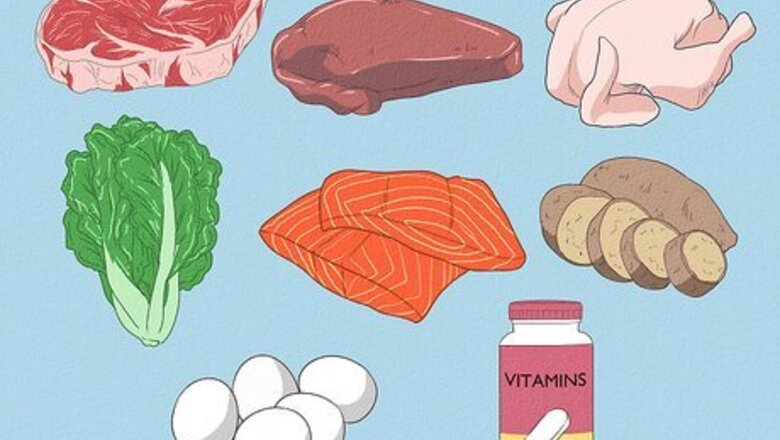
views
Understanding Dog Nutrition
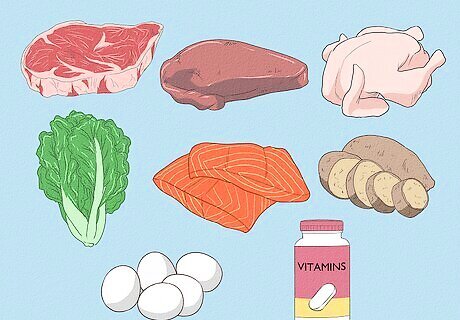
Know what nutrients dogs need. A dogs digestive system is different from the human one and the balance of ingredients in homemade dog food needs to be tailored to the dogs special needs. When you cook for your dog, keep the following in mind: Dogs are carnivores, so at least half of a dog's diet should be composed of protein, which provides dogs with the nutrients and minerals they need to be strong and healthy. Chicken, turkey, beef, lamb, and fish are all acceptable sources of protein for a dog. Dogs can also be fed eggs and vegetables that contain protein. Organ meat, such as liver and kidney, should only be given to your dog a few times a week. Dogs may also eat grains, root and green vegetables, as long as they are thoroughly cooked. Feeding dogs a vegetarian or vegan diet can hurt their digestive system, since it's tough for dogs to break down large amounts of vegetables. Supplement your dog's homemade meals with vitamins made for dogs, to make sure they get everything they need. Talk with your vet about supplements you can buy. Be especially careful to make sure your dog has enough calcium, or she may suffer bone injuries as she grows and ages.
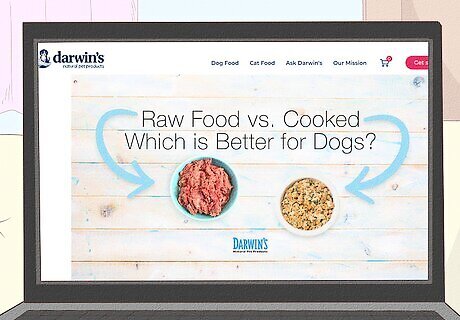
Decide whether to feed your dog raw or cooked meat. Some say that raw meat is better for dogs, since they aren't susceptible to the organisms that make humans sick from eating raw steak or chicken. Other sources claim that cooked meat is a safer choice. A raw meat diet often also include bones, which provide dogs with necessary calcium and other nutrients. Conduct research to decide what type of meat you want to feed your dog. Ask your vet if you want more information on the subject.
Preparing Cooked Dog Food

Cook 2.5 cups meat. You may use ground beef, chicken, lamb, turkey or any other type of meat your dog likes. Cook it by frying, boiling, baking, sauteing or otherwise heating it through. Add a small amount of organ meat to this recipe every other week, to ensure your dog gets the vitamins she needs. Olive oil is safe for dogs to eat, so feel free to use it to keep meat from sticking to your pots and pans. There is no need to season the meat with salt and pepper. Dogs don't have the same taste buds that humans do, and too many spices can upset their stomachs.
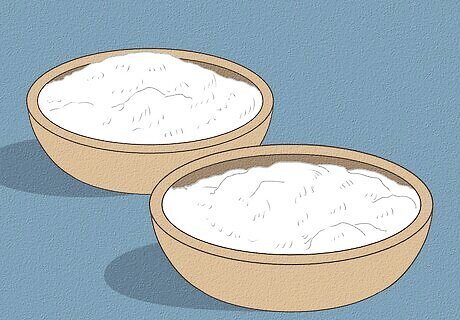
Prepare 2 cups of cooked starch. Use white or brown rice (brown rice may be helpful if your dog has digestive problems), oatmeal, barley or cooked pasta. Cook the starch a few minutes longer than you normally would to make it easier for your dog to digest.
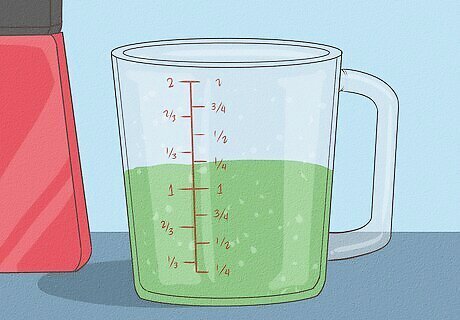
Cook 1.25 cups produce. Use fresh or frozen fruit or vegetables, such as green beans, squash, broccoli, spinach, peas, carrots, bananas, or berries. Boil them until they're completely soft, then transfer them to a blender and puree until smooth. Dogs have trouble digesting vegetables, so it's important to make sure they're completely smooth before serving them to your dog. If you don't have the time or inclination to puree vegetables and fruits, you can substitute baby food or frozen pureed food. Just make sure it's sugar free.
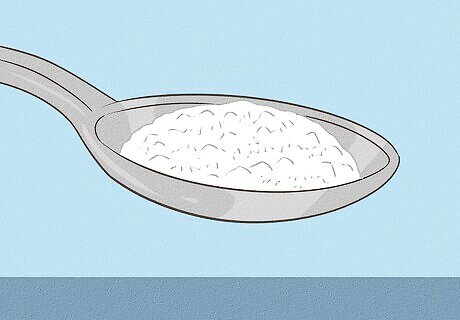
Add calcium. Dogs need a lot of calcium to build healthy bones, so its important to add it to their daily diet. Prepare 1/2 teaspoon crushed eggshells or one teaspoon bone meal, which is available at pet stores.
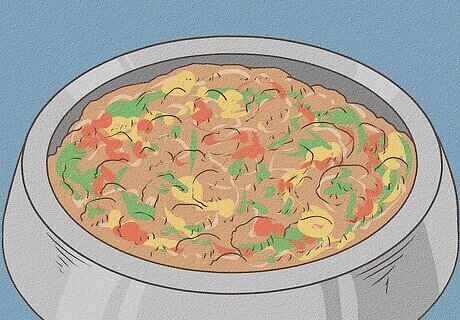
Mix the ingredients. Place the meat, starch, pureed vegetables, and calcium supplement in a large mixing bowl. Stir the mixture thoroughly, then divide the dog food into serving-sized portions. Place the portions you don't serve right away in airtight food storage containers and refrigerate them until serving time.
Preparing Raw Dog Food
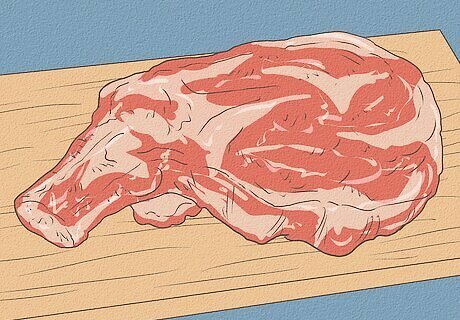
Buy raw meat. Go to your grocery store or butcher and purchase one of the following types of raw meat. Buy it with the bone in, since uncooked bones are soft enough for your dog to chew and eat. Chicken without bones. Poultry bones are brittle, they can get stuck in the dogs throat and can therefore be very dangerous to eat for your pup. Pork meat, bones, head and tail. Cow meat (not bones, since they are too hard) or calf meat and calf bones. Lamb meat, bones and heads.
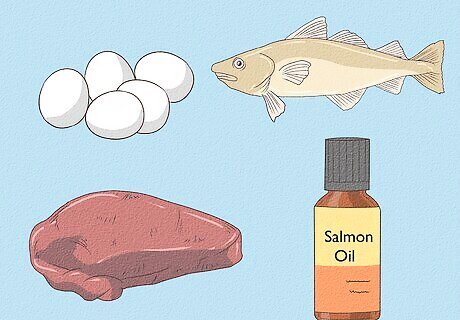
Prepare the extras. Raw meat can be supplemented with other flavorful sources of vitamins and minerals your dog needs to be healthy. Liver, heart, and tripe. Whole eggs. Tinned or whole fresh fish. Salmon oil.

Add greens, fruits, and vegetables. Dogs eating a raw food diet get almost everything they need from meat, but including some vegetables in their diet is a great way to add variety. Puree one or more of the following vegetables in the blender: Spinach, carrots, collards or parsnips. Apples, pears or other fruit your dog likes. Sweet potatoes. Don't include any ingredients that are dangerous for dogs, like chocolate, grapes, avocados, or grapeseed oil.

Serve the raw meal. Fill your dog's bowl with the proper amount of food according to her weight. It should be composed of mostly raw meat with a few extras and a dollop of vegetables or fruit. Store leftover meat and other dog food in an airtight food container in the refrigerator.




















Comments
0 comment